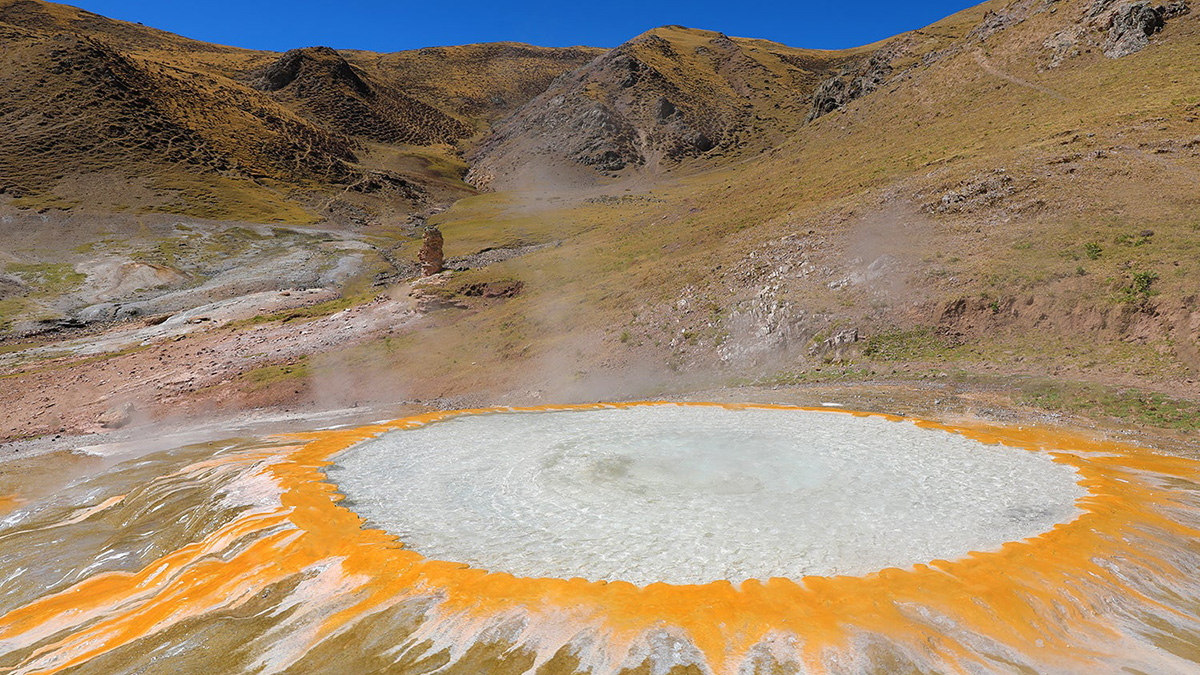Helium that was once part of the atmosphere of the extrasolar planet HAT-P-32b is being ripped away and forming two giant streamers of gas several million kilometers long.
helium
Fossil Fuels Drive Increase in Atmospheric Helium
After decades of uncertainty, scientists have finally shown that fossil fuel extraction has flooded the atmosphere with 4He.
Hot Springs Suggest How the Tibetan Plateau Became the Roof of the World
Helium isotopes found in water samples provide a snapshot of what lies beneath the plateau and stimulate debate within the geosciences community.
How Old Is the Mekong River Valley?
Granite samples collected from the Mekong River Valley reveal that the river’s path was incised roughly 17 million years ago, most likely by increased erosion from monsoon precipitation.
Erasing a Billion Years of Geologic Time Across the Globe
The Great Unconformity—a huge time gap in the rock record—may have been triggered by the uplift of an ancient supercontinent, say researchers using a novel method for dating rocks.
Probing the Cusps of Saturn’s Magnetic Field
Data from the Cassini spacecraft show that the cusp regions of Saturn’s magnetic field—where it connects to the Sun’s magnetic field—have similarities to Earth’s and also intriguing differences.
Better Tools for Tracing the Thermal History of Rocks
Thermo2016: The 15th International Conference on Thermochronology; Maresias, Brazil, 18–23 September 2016
Tanzanian Volcanoes May Hoard Helium Ready for the Taking
Sweet spots of volcanic heat that are not too close to active eruptions may hold the world's richest reservoirs of the scientifically and medically important gas helium.
Details of Gas Flow in Wetland Plant Roots Unearthed
Scientists track the flow of trace gases through wetland root systems to understand the role of plants in biogenic gas fluxes.








